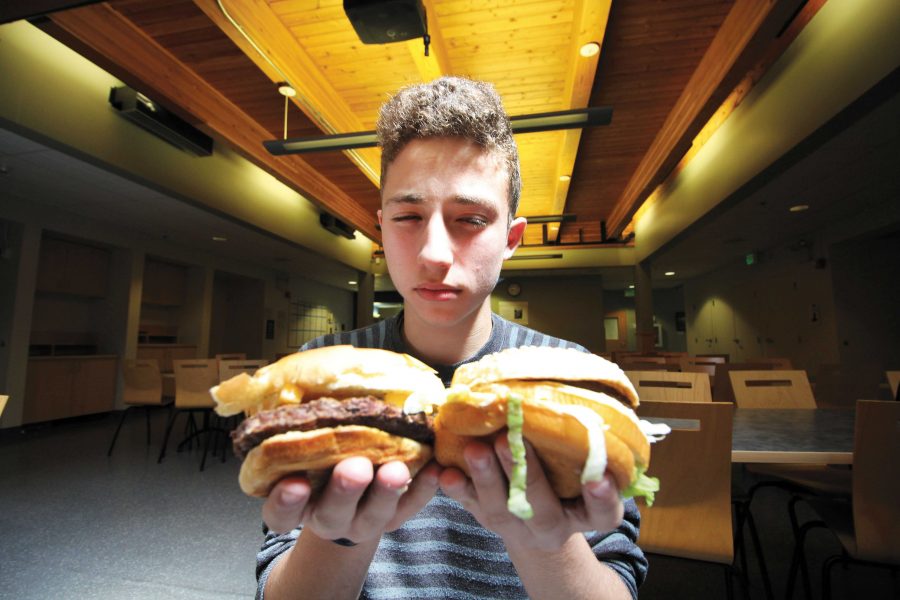Given the choice, do people prefer Mom’s cooking or McDonalds’?
It’s hard to ignore the constant publicity in American pop culture in favor of or against “fast food.” While many urge against the consummation of such food, large food corporations such as McDonald’s and Burger King constantly throw the advantages of their product in your face.
The questions are, what is the advantage of fast food? Why is it so popular? And, are U Prep students drawn to fast food similarly to so much of America?
“Usually, I’ll have [fast food] for lunch if I can’t make something at home because it’s easy, fast and cheap,” says Junior Matt Glazer.
Glazer says that these advantages make places such as McDonald’s a good option for him.
I decided to investigate on my own the advantages and disadvantages of fast food.
One typical Saturday night at my house, I was cooking hamburgers on the grill for my family. The very next day, I journeyed a couple minutes’ drive away from home to eat at the neighborhood McDonald’s. What I discovered made sense, but it revealed to me why so many choose fast food.
First off, it’s no question that cooking from home is by far the more expensive endeavor when compared to eating at just about any fast food chain.
There is a tree of factors causing this price differential, but it begins and ends with the quality of the ingredients.
If you really want the best: beef, tomatoes and lettuce — it’s hard to find what you’re looking for in a typical fast food chain.
On top of this — at least in the case of hamburgers — another reason that making food from home costs so much more is that no QFC or Walmart will sell you the individual fixings you need for a hamburger meal.
What this means is that even if you just want a single hamburger for a quick dinner, or even two or three, making low quantities of burgers for yourself will cost the same as it would to make five.
At a fast food chain, you need not worry about this. The restaurant will take care of the ingredients part, and if you want one burger, you get one burger.
In fact, just the patties needed for a home-cooked hamburger dinner can often cost between $10-$20 at a typical grocery store, enough to buy several big-macs or whoppers.
When I made my excursion to McDonald’s, I made it a goal to experience firsthand why so many choose it over a home-cooked meal. One 590 calorie big mac later, I was beginning to better understand the appeal.
Personally, I couldn’t help but feel a bit guilty about eating fast food when there were other options for me.
A McDonald’s meal doesn’t come with nutritions facts, and probably for good reason. After some research, I found that a single big mac — save the typically included fries and a drink — contains about 50% of the estimated FDA recommended daily salt and fat intake.
Of course, McDonald’s pricing options make it almost as cheap to order a whole meal together — a burger with fries and drink — as it is to order a burger alone.
Burgers aren’t the only common fast food item that many look to due to its price, ignoring its obvious health detriments. A typical McDonald’s milkshake has more calories and more fat than a homemade milkshake of the same volume.
Just like with a burger, buying ingredients to make a milkshake at home — not to mention that a blender is almost a necessity, costs much more than a typical McDonald’s shake. One pint of ice cream generally costs $3-6 depending on brand and flavor, and that’s just one ingredient needed for a milkshake. A large chocolate shake from McDonald’s? $2.50.
Glycemic Load is a number used to estimate how much a certain food will raise a person’s blood glucose level after consumption.
Generally, a lower number is seen as healthier for consumption purposes.
The interesting thing is that McDonald’s food often is a middle ground in terms of glycemic load than there competing options at places like Burger King and Chick-fil-A.
In comparison, a McDonald’s Big Mac has a glycemic load of 20 while a Burger King Whopper rounds out at 25.
On the other end, an order of six mcnuggets has a glycemic load of eight, while an order of eight chick-fil-A nuggets has a glycemic load of six.
So while eating fresh proves to be an obvious plus in the health column, cost options and ease of access evidently make fast food a popular option among high school students.
By: Isaac Glasser


